
Galactica Media-Journal of Media Studies - Galaktika Media-Zhurnal Media Issledovanij
Scope & Guideline
Charting New Territories in Media Research
Introduction
Aims and Scopes
- Interdisciplinary Approaches to Media Studies:
The journal embraces a variety of disciplines, including cultural studies, sociology, anthropology, and communication studies, allowing for a multifaceted exploration of media phenomena. - Analysis of Media Representations and Their Impact:
Research often focuses on how different media forms represent cultural, social, and political issues, examining the impact these representations have on public perception and discourse. - Digital Media and Its Sociocultural Effects:
A significant focus is placed on digital media, exploring its role in shaping identities, social interactions, and political engagement in the contemporary digital landscape. - Cultural Critique and Historical Contextualization:
The journal frequently engages with historical narratives and cultural critiques, analyzing how media has shaped and been shaped by historical events and movements. - Media Literacy and Public Engagement:
There is an emphasis on media literacy, exploring how audiences engage with media and the importance of critical media consumption in the digital age.
Trending and Emerging
- Mediatization and Its Social Implications:
Research exploring the concept of mediatization, particularly in relation to social issues like violence and political representation, has gained traction, reflecting an interest in how media shapes societal narratives. - Digital Identity and Youth Culture:
Studies examining the relationship between digital media usage, identity construction, and youth culture are increasingly prevalent, highlighting concerns about self-esteem and social comparison in online environments. - Political Communication in Digital Spaces:
There is a growing focus on how digital platforms facilitate political communication, including the analysis of social media strategies used by political figures and movements. - Cultural Memory and Media Representation:
Emerging research themes are focusing on how media contributes to cultural memory and collective narratives, particularly in the context of social movements and historical events. - Critical Examination of New Media Practices:
The journal is increasingly publishing work that critically examines new media practices, including topics such as cancel culture, fake news dissemination, and the implications of digital communication strategies.
Declining or Waning
- Traditional Media Analysis:
There appears to be a decline in research focused solely on traditional media forms (e.g., print newspapers and television), as the journal increasingly prioritizes digital and social media studies. - Historical Media Studies without Contemporary Relevance:
Papers focused on historical media studies that do not connect to contemporary issues seem to be less frequent, suggesting a trend towards more applicable and current research themes. - Narrowly Defined National Media Studies:
Research centered on specific national media landscapes without broader implications or comparative analyses is less prominent, indicating a shift towards more globalized perspectives. - Static Media Effects Research:
Studies that examine media effects in a static manner, without considering the dynamic and evolving nature of media interactions, are becoming less common. - Overemphasis on Quantitative Methods:
There is a noticeable decline in the use of solely quantitative methodologies in favor of qualitative and mixed-method approaches that provide deeper insights into media phenomena.
Similar Journals
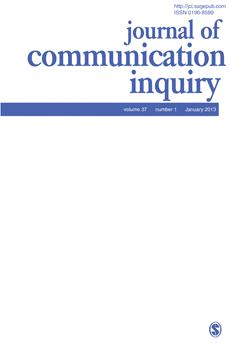
Journal of Communication Inquiry
Illuminating Contemporary Issues in Communication and the ArtsJournal of Communication Inquiry, published by SAGE PUBLICATIONS INC, is a premier interdisciplinary journal that serves as a vital platform for scholars and practitioners in the fields of communication, cultural studies, and the arts and humanities. With a rich history dating back to its inception in 1974, the journal has consistently upheld rigorous academic standards, reflected in its impressive rankings within the Q1 and Q2 quartiles across various disciplines according to the latest metrics. The journal's comprehensive scope encompasses theoretical and empirical research, catering to a diverse readership who are keen to explore contemporary communication issues and cultural dynamics. While the impact factor is not explicitly stated, the journal's Scopus ranks position it favorably within its categories, with notable percentiles that highlight its influence in the academic community. As an essential resource for researchers, professionals, and students alike, the Journal of Communication Inquiry invites contributions that advance the discourse surrounding communication practices and cultural phenomena, contributing to the ongoing dialogue in these evolving fields.

Media Education-Mediaobrazovanie
Exploring the Intersection of Media and LearningMedia Education-Mediaobrazovanie is a prominent journal that focuses on the interdisciplinary field of media education, a vital area of study in today's digital and information-driven society. Published by Cherkas Global Univ Press, this journal aims to advance the knowledge and practices surrounding the integration of media in educational settings, exploring the implications for teaching, learning, and societal engagement. Although it currently does not offer open access options, the journal is committed to providing a platform for rigorous research, theoretical discussions, and innovative practices related to media literacy and education. The journal’s ISSN is 1994-4160 and the E-ISSN is 1994-4195, ensuring that the work published reaches a broad academic audience. With the rise of digital communication and media consumption, Media Education-Mediaobrazovanie plays a critical role in preparing educators and researchers to navigate and harness the power of media in educational contexts. It serves as an essential resource for those seeking to enhance their understanding of media's impact on education and society.
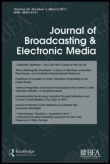
JOURNAL OF BROADCASTING & ELECTRONIC MEDIA
Illuminating the Dynamics of Digital CommunicationThe JOURNAL OF BROADCASTING & ELECTRONIC MEDIA, published by Routledge Journals, Taylor & Francis Ltd, is a premier academic publication in the field of communication, officially recognized in the Q1 category for its exceptional quality and impact. With a rich history dating back to 1985, this journal serves as a vital platform for innovative research and critical discussions surrounding broadcasting and electronic media, addressing contemporary issues in digital communication, media technology, and audience studies. The journal boasts an impressive Scopus rank of #73 out of 511 in the Social Sciences - Communication category, placing it within the top 15% of its field. Researchers, professionals, and students alike benefit from its insightful articles that contribute to understanding the evolving landscape of media and communication. Although it does not currently operate under an Open Access model, its rigorous peer-review process ensures that published works meet high academic standards, sustaining its reputation as a cornerstone for scholarly discourse in the media industry.
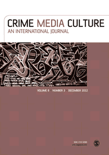
Crime Media Culture
Investigating the Cultural Impact of Crime RepresentationCrime Media Culture is a leading academic journal published by SAGE Publications Ltd, dedicated to exploring the intricate interplay between media representations of crime and societal perceptions. Established in 2005, this journal has become a cornerstone in the fields of Cultural Studies, Law, and Communication, consistently ranking in the top quartiles within relevant categories, including a Q1 ranking in Arts and Humanities (miscellaneous) and Cultural Studies for 2023. The journal offers a platform for interdisciplinary research that addresses the critical implications of media narratives surrounding crime, appealing to researchers, professionals, and students alike. With a strong focus on contemporary issues, it provides insightful analyses and discussions that contribute to the evolving discourse on crime and its representation in various media forms. Although the journal is not open access, it remains vital for those seeking to understand the broader context of crime through media, making it an essential resource for academics and practitioners in the UK and beyond.
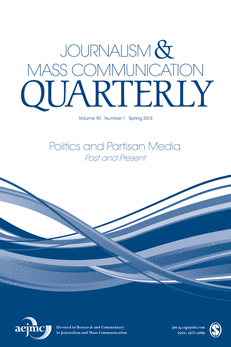
JOURNALISM & MASS COMMUNICATION QUARTERLY
Unveiling critical perspectives on today’s media landscape.JOURNALISM & MASS COMMUNICATION QUARTERLY, published by SAGE PUBLICATIONS INC, stands as a premier platform for scholarly discourse in the fields of journalism and mass communication. With an impressive Q1 ranking in the Communication category for 2023, this journal serves as an essential resource for researchers, professionals, and students seeking in-depth analysis and insights into contemporary media landscape challenges and evolutions. Its comprehensive scope, encompassing studies from as early as 1955 through 2024, provides a rich repository of historical and current research, ensuring a continuous dialogue about the impacts of media on society. Although not an Open Access journal, it remains highly regarded, evidenced by its Scopus rank of #41 out of 511 in the Communication field and a remarkable 92nd percentile ranking. As a critical resource, it contributes significantly to advancing academic knowledge and practical applications in journalism and mass communication.

Doxa Comunicacion
Connecting ideas and scholars in the realm of communication.Doxa Comunicación is a prominent open-access journal dedicated to advancing the field of communication studies, published by Universidad San Pablo CEU, under the Faculty of Humanities and Communication Sciences. Established in 2003, this journal has gained recognition for its commitment to disseminating high-quality research and thought-provoking articles, fostering a vibrant academic community. With an ISSN of 1696-019X and an E-ISSN of 2386-3978, Doxa Comunicación occupies a vital niche in the academic landscape of Spain, contributing to both national and international discourses. In the 2023 rankings, it is categorized in the Q3 quartile within the fields of Communication and Social Sciences (miscellaneous), reflecting its competitive standing among peer publications. The journal's diverse scope, including contemporary communication theories and practices, ensures relevance for researchers, professionals, and students alike. With a Scopus rank of #333 in Social Sciences (miscellaneous) and #291 in Communication, Doxa Comunicación serves as an essential platform for innovative research that addresses the complex challenges of modern communication in a rapidly evolving society.
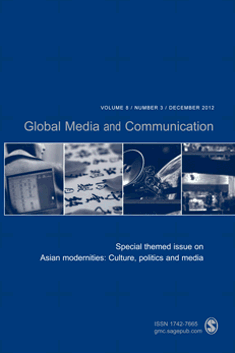
Global Media and Communication
Advancing Insights into Global Media DynamicsGlobal Media and Communication is a premier journal dedicated to advancing the fields of media and communication studies, published by SAGE Publications Ltd. With an ISSN of 1742-7665 and an E-ISSN of 1742-7673, this journal offers a platform for scholarly discourse and innovative research that explores the intricate relationships between global media practices and communication strategies. Recognized as a Q1 journal in both the Arts and Humanities (Miscellaneous) and Communication categories for 2023, it stands out in its commitment to delivering high-quality, peer-reviewed articles that contribute to the understanding of contemporary media landscapes. Located in London, United Kingdom, the journal benefits from being at the heart of cultural and digital innovation. Researchers, professionals, and students can look forward to insightful articles that not only critique existing frameworks but also propose new methodologies, ensuring that Global Media and Communication remains a vital resource for anyone interested in navigating the evolving dynamics of media and communication on a global scale.
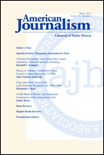
American Journalism
Exploring the Evolution of Journalism.American Journalism is a prominent peer-reviewed journal dedicated to advancing the field of communication, with a particular focus on the evolving landscapes of journalism practices and media studies. Published by Routledge Journals, Taylor & Francis Ltd, this journal serves as a critical platform for researchers, professionals, and students aiming to explore the multifaceted dimensions of journalism from 1983 to the present. While it currently holds an impact factor ranking within the Q4 category of communication disciplines, its commitment to publishing innovative research and fostering dialogue ensures it remains an integral resource for understanding contemporary media dynamics. With its address in the heart of the United Kingdom, the journal upholds a global perspective, engaging with diverse issues relevant to today's journalistic environment. Although it does not provide open access options, the journal offers access through various academic libraries and institutional subscriptions, making it a valuable asset for anyone invested in the future of journalism.

Communitas
Fostering Innovation in Communication and LinguisticsCommunitas, published by the University of the Free State, is an esteemed open-access journal that has been a gateway for innovative research and discourse in the fields of communication, linguistics, and language since its inception in 2017. With an ISSN of 1023-0556 and E-ISSN of 2415-0525, the journal aims to foster scholarly exchange by providing a platform for critical analysis and interdisciplinary collaboration. Although it currently falls into Q4 in Communication and Q3 in Linguistics and Language, *Communitas* has made significant strides in establishing its presence in Scopus rankings—ranking 567 out of 1088 in Arts and Humanities and 397 out of 511 in Communication—and sources for researchers at varying stages of their careers. Addressed to a global readership, the journal invites contributions that enhance understanding and generate new perspectives on socio-linguistic issues and communicative practices, making it a pivotal resource for researchers, academics, and students committed to advancing knowledge in these dynamic fields.

Middle East Journal of Culture and Communication
Illuminating the Intersection of Culture and CommunicationMiddle East Journal of Culture and Communication is a vital scholarly platform published by BRILL, dedicated to fostering an understanding of cultural dynamics and communication pathways within the Middle East. Established in 2008, this journal delivers a rich array of interdisciplinary research spanning the fields of Arts and Humanities, Communication, Cultural Studies, Political Science, and Sociology. With an impact factor reflective of its commitment to high-quality scholarship, it currently ranks in various quartiles, including Q3 in Arts and Humanities (miscellaneous) and Q4 in Communication and Political Science, demonstrating its importance in the academic discourse surrounding these disciplines. The journal's open access policy ensures that critical insights and analyses are widely disseminated, catering to a global audience of researchers, professionals, and students alike. The Middle East Journal of Culture and Communication stands as an essential resource for those seeking to explore the intricate tapestry of cultural interactions in the region through rigorous academic inquiry.